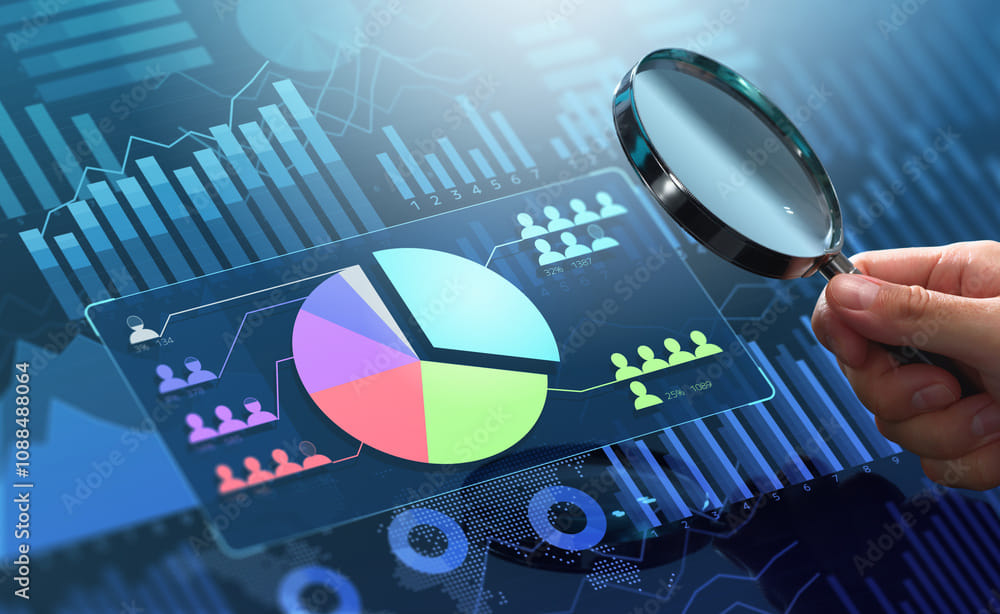· 5 min read
AI and elearning review
Using AI to wrangle the data for more personalized learning

Data-Driven Learning: How AI Personalizes Educational Experiences
Modern learning management systems are increasingly leveraging artificial intelligence to create personalized educational experiences. This approach transforms how students interact with educational content by using comprehensive data analysis to adapt in real-time to individual needs.
The Data Collection Process
When a student engages with an AI-enhanced learning platform, the system begins collecting data from the moment they log in. Initial assessments provide baseline information about knowledge levels and learning gaps. As the student progresses through lessons, watches instructional videos, and completes practice exercises, the system monitors not just right and wrong answers, but engagement patterns, time spent on different concepts, and even hesitation points. These digital breadcrumbs form a detailed map of the student’s learning journey.
Unlike traditional educational approaches where assessment happens primarily at designated intervals, these systems maintain a continuous stream of performance data. A student who repeatedly pauses videos at certain concepts might be flagging areas of confusion without explicitly stating it. Similarly, quick progression through certain materials might indicate prior mastery or particular aptitude in those areas.
Data Storage and Organization
This wealth of information flows into a centralized knowledge repository where it doesn’t exist in isolation. The system contextualizes individual learning data alongside course curricula, detailed learning objectives, and performance metrics from broader student populations. This comprehensive view allows for meaningful comparisons and insights.
The repository serves as both the system’s memory and its analytical foundation. When properly structured, this data environment allows connections to form between seemingly disparate elements of the learning process. A student’s struggle with algebraic concepts might connect to earlier difficulties with number properties, revealing a chain of prerequisite knowledge that needs reinforcement.
The AI Analysis Layer
At the heart of personalized learning systems lies sophisticated artificial intelligence that transforms raw data into actionable insights. These algorithms identify patterns in learning behaviors that might escape even experienced educators dealing with large classes. The AI continually builds and refines a cognitive model of each student, analyzing strengths, weaknesses, and optimal learning approaches.
When a student performs poorly on a specific concept, the AI doesn’t simply register a low score. It analyzes the particular misconceptions evident in incorrect answers, compares these patterns with typical learning progressions, and identifies the most likely knowledge gaps. It might recognize that a student who consistently makes certain calculation errors isn’t struggling with the core concept but with a specific procedural step.
The system can also predict future learning challenges based on current performance patterns. Students demonstrating particular difficulty with foundational concepts might receive proactive support before attempting more advanced material that builds upon those foundations.
Personalization Mechanisms
Based on this rich analysis, the system crafts a learning experience tailored to each student. Content recommendations flow naturally from identified needs—a student struggling with polynomial factorization might be directed to supplemental examples or alternative explanations before proceeding to more advanced topics. These aren’t random suggestions but carefully selected resources matched to specific learning gaps.
Assessment becomes an adaptive process rather than a standardized experience. Instead of every student facing identical test questions, evaluations dynamically adjust in difficulty and focus area based on demonstrated mastery. A student who has clearly mastered basic trigonometric functions might receive fewer questions on those topics and more on areas where proficiency is still developing.
Perhaps most importantly, feedback transforms from generic right/wrong indicators to contextual guidance. When a student provides an incorrect answer, the system can identify the specific misunderstanding and provide targeted explanation. This might involve linking to relevant foundational concepts, offering step-by-step breakdowns of problem-solving processes, or presenting the material through alternative explanations that match the student’s learning patterns.
The Continuous Improvement Cycle
This entire process operates as a dynamic feedback loop rather than a linear progression. Each interaction refines the system’s understanding of the student, creating increasingly personalized experiences. As the student demonstrates mastery in previously challenging areas, the system adjusts accordingly, introducing more advanced content or reducing redundant practice.
This iterative approach also generates valuable insights beyond individual students. Patterns emerging across larger student populations can identify curriculum elements that consistently create challenges, reveal particularly effective teaching approaches for specific concepts, and highlight optimal learning sequences that might inform broader educational design.
Educational Benefits and Considerations
Research in educational psychology has long suggested that personalized, mastery-based instruction can dramatically improve learning outcomes—what Benjamin Bloom called the “2 Sigma advantage.” AI-driven learning systems aim to scale this level of personalization that was previously only possible with one-on-one tutoring.
By continuously adapting to individual needs, these systems can potentially address knowledge gaps before they become problematic, accommodate diverse learning styles, and create more efficient educational pathways. Students spend less time on content they’ve already mastered and more on areas requiring development.
However, these technological approaches also raise important considerations for educators and institutions. The extensive data collection necessary for personalization must be balanced with privacy protections and ethical data use. There remains crucial value in human educational relationships that technology cannot fully replace. And there’s ongoing debate about how to maintain creativity, critical thinking, and social development in increasingly automated learning environments.
As educational technology continues evolving, the most effective implementations will likely be those that thoughtfully combine AI-driven personalization with human guidance, using technology to enhance rather than replace the essential human elements of the educational experience.



